How To Consistently Catch Redfish, Snook, & Seatrout [Inshore Manifesto]
- By: Luke Simonds
- on
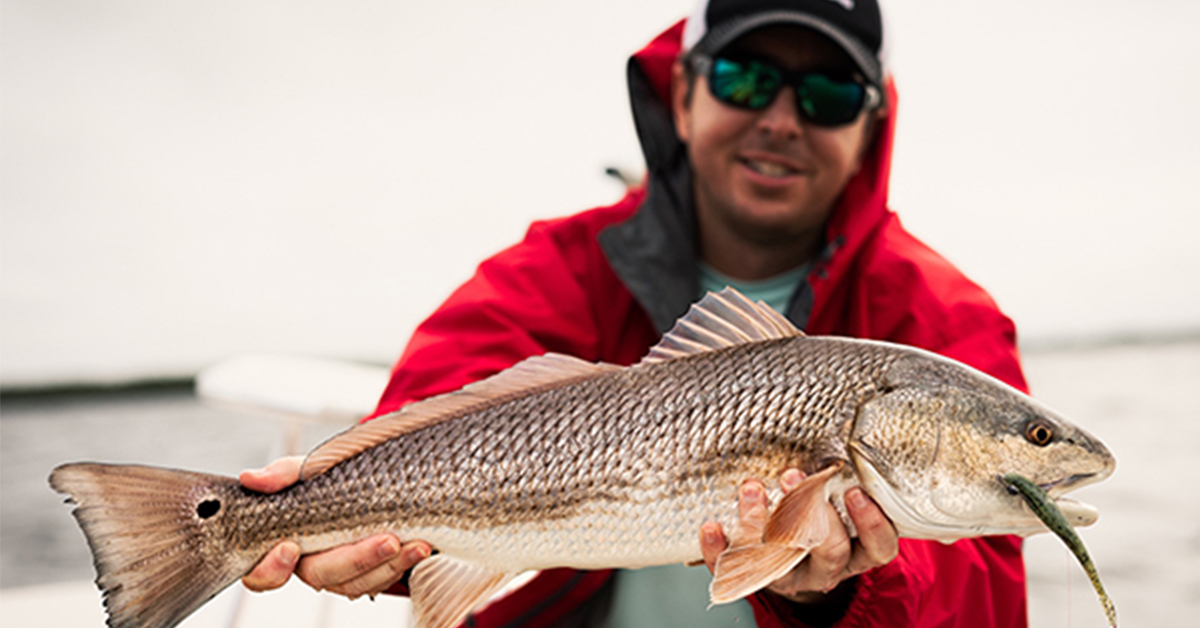
Can a single fishing tip PDF change the way you fish forever?
Seems rather crazy doesn’t it…
That a single report could literally alter how many Inshore Slams you catch for the rest of your life.
But I am here to tell you that it’s entirely possible because I’m living proof that it can…
I just wish I had my hands on this report (that I am about to share with you below) 15 years ago.
Below you will find the 3 inshore breakthroughs that I learned the hard way over many years of trial and error (and thousands of dollars of wasted money on fishing gear that wasn’t effective).
Best of all, it addresses the fact that live bait is NOT required for catching quality redfish, snook, flounder, and trout…
In fact, I personally catch more quality inshore slams per hour with artificials compared to live bait.
And if you would have presented that statement to me when I began inshore fishing ~15 years ago, I would have told you that you are CRAZY!!!
But I have personally undergone a significant transformation in regards to how I approach inshore fishing over the past 5 years that has allowed me to consistently catch more (and bigger) redfish, snook, and speckled trout than I ever thought possible for a weekend warrior… even to a point of me consistently placing in tournaments against 30+ other avid fishermen (and a handful of professional guides).
And I’ll be 100% transparent in my hesitation to post this Inshore Fishing Manifesto online for all to see.
In fact, I wrote it a while back and kept it hidden in our private inshore tips section so that I could control who saw it and could easily pull it back if the feedback was negative.
However, it has been downloaded by over 20,000 of your fellow inshore anglers and the feedback has been awesome, so I decided to go ahead and take it live on our site so that it could be helpful to more anglers.
Note: This is an abbreviated version of the Manifesto, so make sure to request the full report below so you can get the entire Manifesto and read it when time permits (see yellow box below).
Want to have this entire 7,000+ word article emailed to you in a nice PDF that you can save, download, read, and reference whenever you want?
AND watch the video training where my brother Joe and I talk through each of the three breakthroughs while we share our screen?
AND get the audio download for the training?
Then Click Here to have the full PDF, video, and audio emailed to you instantly.
Here’s what you’ll see in this Inshore Fishing Manifesto:
- Free PDF Ebook Of This Manifesto
- Forward
- Who Is Luke Simonds?
- The Cardinal Rule
- Breakthrough #1
- Breakthrough #2
- Breakthrough #3
- Conclusion
- Insider Club Special Offer
FORWARD
Here is what some of our students are saying about this Manifesto plus the assortment of helpful fishing lessons SaltStrong.com:
“You guys Rock! Been living down here in Tampa for the past 4 years. Struggling to improve my fishing game and learn from anyone I can (friends, co-workers, fishing clubs, Youtube, etc.). Hands down, your site, content, and membership has been the best help I can find. Caught 2 snook and 1 redfish (in-slot) in the past two weeks from utilizing your tips. That’s a huge improvement, considering I’ve only caught 1 snook and 1 redfish in the 3 years prior. Thank you so much for sharing what took you so much trial and error to master. Really appreciate it!”
~ Alan S. in Tampa, FL
“Get ready for a life-changing experience. It’s fun when your buddies start asking YOU where are the fish!”
~ Al M. in San Antonio, TX
“Hey Luke. Great material here. Worth every penny! I’m relatively new to inshore fishing. I especially like the info on when where and why. Tackle set up and favorite lures was very helpful too. Got your info to a friend of mine and he is equally pleased with the vast amount of info for the price. Thanks!”
~ Jay W. in Verbina, AL
“Loving the course, looking forward to trying the tips. Love the interactive, learn on my schedule approach with streaming videos. Great idea!”
~ Stephen C. in Youngsville, LA
“I just wanted to say thank you to the proprietors and leaders of salt strong for providing this community and resources. Even as a New Englander this community has made me a better freshwater angler and a way better Striper fisherman”.
~ Steward H. in Bristol, ME
“I’m really impressed with your Insider Community. I wasn’t sure what to expect – maybe a random message every few weeks or a few tips or product reviews – but after just a few hours of browsing around and talking to people, I have access to more information than I ever imagined. And, like, real, from-the-trenches information – not the vague junk I see in “fishing reports” from the local newspaper. The community aspect of it is something I didn’t think I needed in my life, but now I realize that it fills a hole I never knew I had. The positivism and openness is awesome. Job well done, gentlemen!”
~ Eric R. in Myrtle Beach, SC
“Luke, I am somewhat new to this “redfishing” thing (just moved to JAX FL about 6 months ago from Australia – originally from Idaho), and I have been out on the water trying for redfish like crazy. I have caught a few in the last couple of months (maybe 10 or so and only 1 slot redfish ever). But after studying your Slammer course I went out today (after a cold front), I had 6 spots picked out, had my 3” new penny Gulp shrimp, and was mentally ready with all of the new information. Well, guess what – in the first 30 minutes I had a slot red! 10 minutes later another slot redfish. Overall, I had 5 redfish in 3 hours. Most fun since moving to Florida. Thank you.”
~ Jason M. in Jacksonville, FL
“You guys really are awesome. A complete game-changer to my busy schedule. I can now plan a fishing day, 3 – 4 hours, kill it and go home.
Thank you!”
~ David J. in Naples, FL
“I would be light years behind if I hadn’t discovered salt strong!”
~ Ray W. in Sarasota, FL
“Finally got to go fishing at Port O’Connor, TX after using your “what to look for” video using the Google Earth satellite. Wow, I could find the spots exactly like the video suggested and the best place to anchor. We caught a train load of fish. Most were just under the keeper limits but we did get to keep eight nice trout 19-22” long and a couple of keeper redfish 22-23” long for the skillet. The tide was about 2 feet higher than normal so the satellite view was even more useful. We didn’t have to hide behind each other to bait our hooks but the bite was constant most of the day. Thanks a bunch”.
~ Dan H. in Seabrook, TX
The 3 “Secrets” To Catching Inshore Fish
What you are now reading is 15 years of on-the-water testing of inshore fishing…
It’s 15 years of me taking notes, journaling my trips, and studying the feeding patterns of redfish, snook, seatrout, flounder, and other inshore fish.
What I discovered through it all is that it’s entirely possible to predict where the feeding fish are once you understand their biology in combination with the three breakthroughs that I’m going to share with you today.
The best news is that I’ve boiled it all down into this 1 article in the form of the 3 core breakthroughs that I had which made the biggest impact.
Can 1 Article Change The Way You Fish Forever?
Seems rather crazy doesn’t it…
That a mere article containing three inshore fishing breakthroughs could literally alter how many inshore fish you catch for the rest of your life.
But I am here to tell you that it’s entirely possible because I’m living proof that it can… and I wish I had my hands on these three secrets 15 years ago when I first starting getting serious about inshore saltwater fishing.
You see, had you told me just 5 years ago that in the future I would be:
- Quitting my plush corporate job after 8 years of climbing the ladder
- Starting a Salt Water fishing company that has taught tens of thousands of anglers how to catch more fish
- Getting tens of millions of views on my Facebook and YouTube “How to…” articles/videos and fishing tips
- And catching more inshore fish using artificial lures than I ever previously could using live bait…
I would have told you that you are CRAZY!!!
But it’s all true…
I really did quit my corporate job to teach people just like you how to consistently catch more fish in less time.
And I really am catching more inshore fish using artificial lures than most live bait anglers in the same time period.
Who Is Luke Simonds?
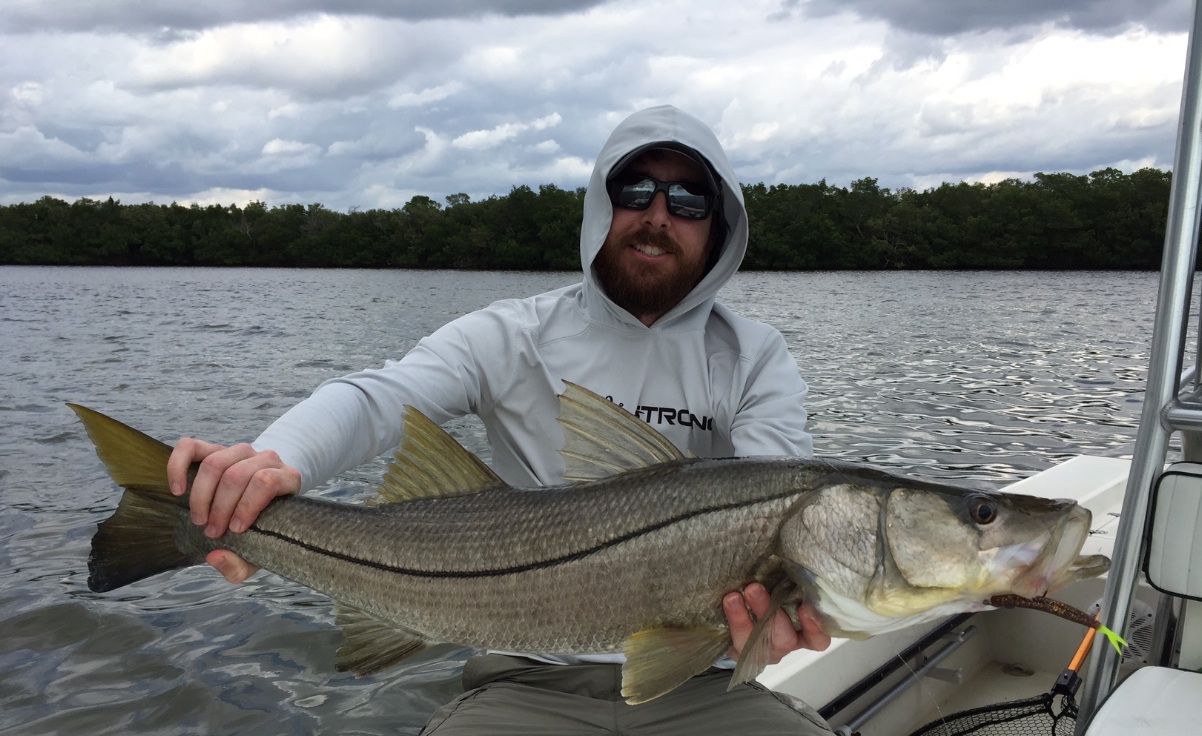
You might know me as:
The guy who caught a snook from the 3rd-floor balcony (viral video)…
Or the guy who helped make the FG Knot famous on YouTube (over 2 million views)…
Or you might know me as the guy who teaches the online fishing courses…
Finally, you might even know me as the Chief Fishing Coach at Salt Strong where my daily job is coaching anglers how to become better fishermen.”
YES, I really do coach fishermen to become better anglers… and pretty much all of the coaching is done online.
And YES, online fishing coaching really does work.
I’ve been doing it full-time for the past 4 years (as of the latest update to this Manifesto), and I’ve been able to successfully impact thousands of inshore anglers who pay me to help them catch more fish with less effort.
Let me tell you, it has been the most rewarding thing in my life to see some of my students go from average weekend warriors to winning inshore fishing tournaments, having more fun out on the water than ever before, and even a couple of students who have been able to quit their “office jobs” and get paid to fish too.
But it wasn’t all inshore slams and high fives for me…
In fact, I was a FRUSTRATED inshore angler for many years because I was focused on the wrong things (I’ll reveal those mistakes in just a bit) that kept me inconsistent for longer than I care to mention.
In fact, I have an entire second room of bad memories, wasted money, and unused tackle that serves as a reminder to what does NOT help anglers like you and me catch more fish.
Bottom line, consistent inshore fishing all boils down to just three things.
Why Am I Sharing These Inshore Fishing “Secrets”?
Well, it’s pretty simple really.
Looking back, I wish someone had given me the same tips I am going to give you in this report.
It would have saved me TONS of time and TONS of money.
It would have saved me countless frustrating days on the water with nothing to show but a sunburn wondering why my handful of spots were so inconsistent.
It would have saved me thousands of dollars from unnecessary rods, reels, lures, and other things that I wasted money on thinking they would solve my fish catching troubles.
And I’m betting that what I’m going to share with you will be as impactful to you as it was to me.
You see, I have personally seen a massive transformation in regards to how I approach inshore fishing over the past 9 years that has allowed me to consistently catch more (and bigger) redfish, snook, and trout than I ever thought possible for a weekend warrior…
Even to a point of consistently placing in tournaments against 40+ other boats with avid fishermen (and a handful of professional guides).
Before this transformation, I was a typical inshore “weekend warrior” angler who was pretty good at catching at least a few fish that I was targeting.
But I was generally only as good as the live bait I was able to catch (or sometimes buy)…
Worst of all, I sometimes even had days where I really had a tough time catching anything at all.
But after the three breakthroughs that I am about to share with you, my approach to inshore fishing significantly changed…
I went from total Frustration to Freedom in terms of consistently catching more redfish, seatrout, snook, and flounder.
And since teaching is another passion of mine, I felt compelled to write this Manifesto because I know it can help other passionate saltwater anglers become more efficient and consistent in their fish catching.
Would you like to hear the inshore fishing breakthroughs?
Just imagine how amazing it will feel when you can hit the water and know you can consistently hook up with feeding fish.
I’m telling you, there is some serious FREEDOM in knowing you can catch fish when your buddies are still struggling to find live bait and find schools of fish.
More importantly, I truly believe that what I’m about to share with you can help bring family and friends closer together.
Why?
Because the techniques discussed you are about to discover are all designed to empower you to catch more fish in less time, which will enable you to get out on the water more frequently and have more great memories on the water with your loved ones.
Long story short… I wish someone had passed this information on to me years ago, and I feel like it is my duty and calling to pass these tips on to you.
But before I reveal them to you, can I ask you a question?
Are you catching good redfish, seatrout, snook, and flounder on a consistent basis when you target them?
My guess is that if you are reading this, then the answer is probably a big “NO”.
But don’t worry, I was in the same boat (pardon the pun) for years.
And once I discovered these breakthroughs highlighted in this manifesto, I realized pretty quickly that it wasn’t my fault. And it certainly isn’t your fault either.
We have all been led to believe that we can just emulate the pros on TV and in magazines that we can catch qualify fish like they do by simply using their recommended rods, reels, lures, etc…
WRONG!
We have also been led astray by so many of the advertisements for the “newest and hottest sizzler of a lure” that seems to be popping up constantly in every magazine, TV show, and even YouTube ad that you see.
WRONG!
Long story short, we’ve been forced to believe that our catching will improve if only we buy that magical lure or piece of fancy fishing equipment.
I know this firsthand because I have a spare bedroom with many hundreds of lures and other fishing accessories that I thought was what I needed to finally catch good fish.
But I eventually realized that they weren’t any good after using them and not seeing the promised results… I surely wasted multiple thousands of dollars on gear that simply didn’t work.
So the negative side effects of this misinformation are:
- Wasted MONEY: There is no reason to have a huge tackle box full of lures.
- Wasted TIME: Chasing around live bait, trying to find new spots, and hopping around aimlessly some days (and if you are a weekend warrior like me, time on the water is super limited, not to mention it is the one that we can’t get back or make up).
- Embarrassment: Fishing was one of my favorite activities, and I was super embarrassed to have to report back to friends and work colleagues after a slow weekend of fishing.
And if you are anything like me, if I am wasting time, wasting money, and sometimes looking like a rookie in front of my friends and angler peers, then something has got to change!
And change fast!
Related to looking like a total rookie on the water, let me tell you a true story that you golfers and tennis players can relate to really quickly…
I enjoy playing both golf and tennis, but I would say my favorite out of the two sports is tennis (but still doesn’t compare to fishing of course).
And a few years back I decided to finally join a men’s tennis league.
Let me tell you, I was pretty nervous my first time out on the court as I hadn’t played competitively in a while, and I certainly wasn’t used to playing with a few dozen people watching.
It wasn’t like hitting against a backboard or with a ball machine where no one notices or sees framed shots…
You mess up in a match like the one that I am playing in, and everyone sees it!
Well my first match should have been filmed and sent in to America’s Funniest Home Videos…
I was playing against a guy who was way older than me and could hardly run. Worst of all, his form was extremely erratic, so he looked like a first-time player when in fact he was actually a consistent hitter.
Anyhow, my game was an absolute disaster… I couldn’t get a first serve in to save my life, and my backhand can only be compared to someone trying to use a spinning reel upside down. All I could do was simply focus on hitting the ball back to the center of the court, which was where this old man was at his best.
It was the most embarrassing tennis match that I can ever remember playing…
And did I mention that there was a group of onlookers taking in this entire thing???
After I shook hands with the old man who mopped me all over the court, I walked out of the gates with my head held as low as possible…but I could just sense all of the people in small crowd staring at me and I to see how I would react to the embarrassing beat down…
I finally looked up to teammates in the seats who were watching and smiled as much as I could muster, and shook my head as if to let them know, that I know, my tennis game really stinks…
But deep down, all I could think about was figuring out a game plan to never look and feel this bad on the courts again.
So on my drive home that day, I started thinking about what I was going to do about this situation…
And as I saw it I had three choices…
- Quit tennis altogether and find a new sport.
- Not make any changes, continue making the same mistakes, never accomplishing what I am capable of on the court, and remain open to super embarrassing experiences.
- Find some shortcuts and learn breakthroughs to help me become a better tennis player so I could enjoy the game more, earn respect, become consistent, and start kicking some butt out there!
What did I do?
When I arrived home I immediately did two things…
- Since I didn’t have time to hire a private coach, I went online and actually purchased an online tennis course that not only promised to teach me the proper techniques, but even guaranteed that I’d benefit from his course or he would give me all of my money back without any hurdles. So I had nothing to lose!
- After watching this guy’s online course, I went out and practiced every chance I had over the next couple of weeks… after work or on weekends, hitting against backboards, playing tennis with strangers… I didn’t care. I had to get better and I wasn’t going to look like an idiot ever again in a match.
Fast-forward just a year from having this revelation on the tennis court…
- I went undefeated in my first season since starting the online training
- I have complete confidence when I show up to the courts
- I have never lost to another old man with bad form… no more humiliating defeats!
So what does all of this have to do with inshore fishing?
Everything!
Let me explain:
This tennis analogy is the perfect analogy to being inconsistent with fishing (I know because I personally struggled at being consistent numerous times with both tennis and inshore fishing).
- The Inconsistent Tennis Player = You, the inconsistent inshore fisherman.
- The old man on the court = your fishing friends, coworkers, or neighbor with lesser gear and/or who don’t go quite as often, yet still catch better fish than you.
- The spectators = people at the launches, docks, marinas, or even family, friends, and coworkers who ask how your fishing trip went.
And just as I had three choices to make in regards to my tennis game, you have exact same three choices to make with your inshore fishing skills…
- Give up, never fish again, and find a new hobby
- Keep being inconsistent and never achieve what you are capable of doing out on the water, never getting the respect that you deserve, wasting tons of money and time “fishing” and testing, while little time actually catching
- Get some shortcuts and learn breakthroughs to catch more fish in less time, become the angler everyone talks about, the angler that everyone wants to fish with, and the one that has your friends wondering what magic fishing pill that you took…
Well the purpose of this Inshore Fishing Manifesto is to help you go down the path of option 3 above… catching more fish in less time by getting some guidance.
And before you dig in to this Manifesto, please know that some of the strategies that I’ll address may be very different than what you’ve been taught so far.
And some may even seem a bit controversial to some people (especially owners of fishing equipment companies)!
But please know that these tips have proven to work for me, and many thousands of fishermen that I have shared them with from all over the United States…
So I am confident that they can help you too.
However, there is one thing I possessed during my transformation that I simply can’t pass down no matter how well I write today…
The burning desire to JUST DO IT.
Meaning, if you don’t have the drive to actually implement the tips and strategies discussed in this manifesto, then you’ll undoubtedly not see the same results that others and I have realized.
So let’s get into it and have some fun.
And please kindly ignore grammar errors… I’m a fishing addict, not an English teacher or journalist:)
The Cardinal Rule
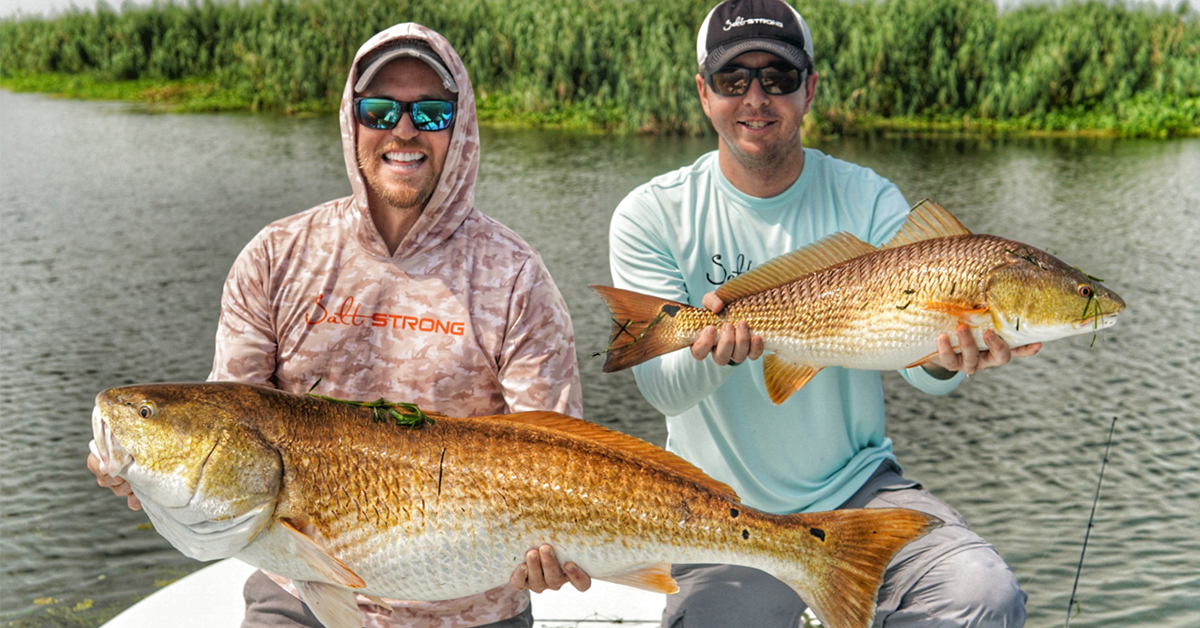
You must first know this before you can fully grasp the 3 secrets revealed next.
The Cardinal Rule with inshore fishing: Know thy target fish.
Sounds obvious, right?
But what I’ve seen from many anglers is a lack of thought about exactly what your target fish WANTS, FEARS, AND FEELS.
These, of course, are the dominating factors that determine where you’ll find them and how you’ll catch them.
Yet most anglers don’t take the time to think about all 3 of them… especially the third one – the FEEL FACTOR.
Let’s first cover the first two that are more basic…
It’s probably a safe bet that many anglers don’t consider what redfish, snook, and/or seatrout fear while deciding where to cast, how long to stay in a particular spot, or which spot to fish next.
For example, a top fear of redfish, snook, and trout is getting seen by a dolphin while away from protection. This is because dolphin are incredibly fast and smart predators that actively feed on them, so even the sound of a dolphin breathing will often shut down the bite because the fish are immediately driven into self-preservation mode.
So it’s typically best to leave to another spot if you see a dolphin working a shoreline that you’re about to fish… or at least give them 20 to 30 minutes to settle down.
Overall, the good news is that knowing thy target fish really isn’t difficult… a fish’s primary want to get its next meal.
And it’s primary fear is becoming a meal to something bigger (dolphin, bigger fish, bird, or human).
Knowing this, it’s fairly easy to understand why redfish, snook, and trout often hold close to structure such as docks, mangrove roots, oyster bars, etc.
Why?
Because all of these structures provide them with cover from their predators… while also providing ambush points for catching their next meal.
Also, it’s important to know that healthy grass flats provide redfish, snook, and seatrout with a tremendous amount of food given that so many shrimp and small baitfish seek cover in the grass.
Although there is not much protection from dolphin or birds on a flat, many redfish, snook, and trout roam grass flats for food and they often hang around schools of big mullet which act as spotters of predators.
The mullet schools also provide assistance in finding food given that they often scare shrimp and small fish from their hiding spots while rooting around in the grass.
Just this general knowledge about their Wants & Fears can put many anglers ahead of the average fisherman.
But what truly separates the fishermen who can consistently put themselves into the feeding zones every trip regardless of the season, weather, tides, etc. is the FEEL FACTOR.
This is referring to the proper understanding of specifically how a redfish, seatrout, snook, flounder, etc. naturally reacts to the changing conditions on any given day.
This factor is the most important of all, yet it’s totally overlooked by most fishermen.
Most people say that the goal is to “think like a fish!”
My philosophy is that theory gives way too much credit to the fish as being individual thinkers.
What I have found is that it’s better to take the focus off of trying to figure out what they are thinking (very likely not much given how small their brains are)…
And instead, consider how your target fish will naturally react to the weather and tides at any given time.
After many the years of both fishing competitively as well as being a full time fishing coach for fishermen from TX, LA, MS, AL, FL, GA, SC, NC, VA, and even farther north along the Atlantic, I have learned that all inshore predator species of fish can be surprisingly predictable based on their natural behavior patterns caused from how their biological preferences reacts with the changing conditions.
So the goal should be to put the full focus on understanding exactly how their biological preferences causes them to react to the changing conditions so that you can predict where they will be positioned based on what their body forces them to do without even thinking about it…
Once this is mastered, it can be accurately implemented across all of the regions where the given species lives allowing you to explore new areas while still catching great fish… THE HOLY GRAIL OF INSHORE FISHING!
The bad news is that it’s too complex to effectively teach in text form, so it unfortunately can’t be revealed in this manifesto.
But the good news is that I built an online platform called “Smart Fishing Spots” for our Insider Club members which is made up of essential online courses that cover the specific fishing finding strategies to use throughout the seasons.
Plus, it includes access to our weekly spot dissections along with a vast network of likeminded anglers who share real-time reports highlighting the real-time feeding trends so that you can know exactly what type of spots to look for on your next trip to maximize your results.
Want to have this entire 7,000+ word article emailed to you in a nice PDF that you can save, download, read, and reference whenever you want?
AND watch the video training where my brother Joe and I talk through each of the three breakthroughs while we share our screen?
AND get the audio download for the training?
Then Click Here to have the full PDF, video, and audio emailed to you instantly.
Inshore Fishing Breakthrough #1
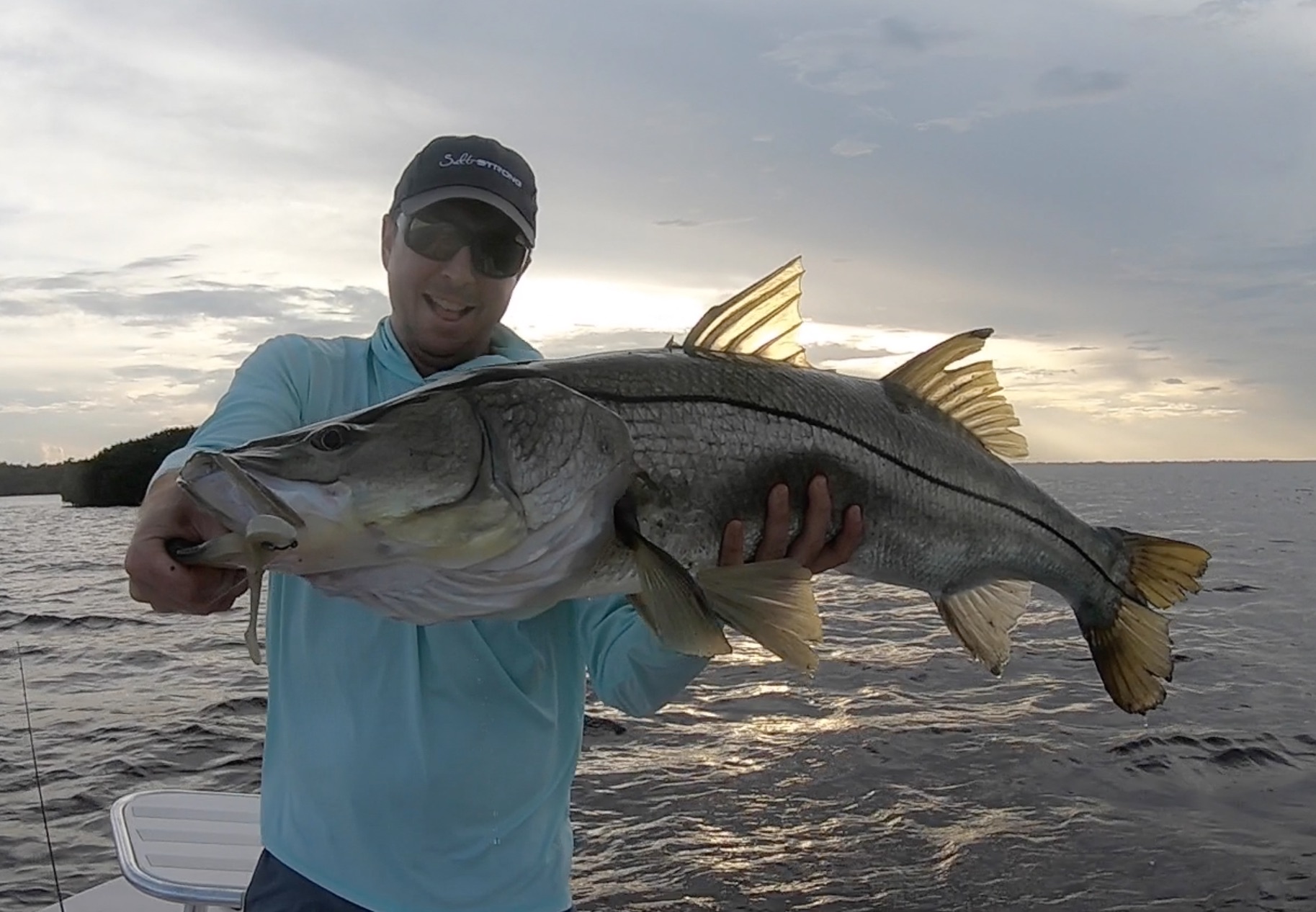
Focus On The Feeding Zones
After years of watching fishing shows where the host would catch tons of big fish with local guides, I was forced to believe that having consistently good success was only possible for fishermen who were out on the water all the time.
My core reasoning was that if the TV show hosts (who were very advanced fishermen) had to get guides to take them fishing in new areas, there was no hope for a weekend warrior like me to do it on my own.
And I found myself justifying my skunk days by claiming that I was just putting in my time to learn the water.
Because how else could you be able to find good fishing spots without actually seeing them firsthand?
The only answer I was able to find was to start buying maps like Top Spots that showed some guidance on specific areas to catch particular types of fish.
And I’d intently study them prior to going out on the water to select the spots that I’d try out that day.
But the problem I found with this strategy was that the listed areas for catching fish were often very large, and it would take forever to effectively fish it with the live bait that I was accustomed to using.
I’d often spend an entire morning trying to assess a single area that was marked as productive. But I’d often end up with nothing to show for my time except a lousy catfish or a just some tiny trout.
Worst of all, I’d get back to the docks and see others cleaning really nice fish that I had previously told myself (and whoever I was taking out that day) that the fish simply weren’t biting…
The sad truth is that just weren’t biting on the end of my line.
But that all changed one day…
I remember being totally blown away the first time I saw a clear satellite image of Bull Bay near Boca Grande showing a bird’s eye view of the entire area while in Gasparilla Marina buying gas for the boat.
The clarity was so crisp that I could see the channels through the bays, the areas with good healthy seagrass, and even some hidden bays that I had no idea where even there.
All I could think about was how amazing it would be to have an even closer view in order to be able to identify oyster bars, seagrass beds, potholes, and other forms of underwater structure that I knew where typically feeding zones for inshore predators.
And then FINALLY the answer for efficiently finding good fishing spots arrived in the late 90s…
That’s when I stumbled upon the new addition to Mapquest.com, which was the inclusion of satellite imagery maps that allowed us to actually zoom in on specific spots to get a bird’s eye view of the waterways that I wanted to explore.
I remember being completely AMAZED at how I could easily see the underwater structure at my favorite inshore spots with just a couple clicks of the mouse.
So I immediately began analyzing aerial maps on the Internet to get a bird’s eye view of the fishing grounds that the other maps that I had paid for which highlighted the general areas as being productive.
My theory was that it sure would be nice to see exactly what the bottom contours looked like in those big recommended zones without having to take my boat or kayak over every square inch of the.
This way, I could more efficiently find the actual spots that held fish inside the big areas that the maps highlighted.
After just a few months of using the aerial images, my results steadily improved.
Best of all, I felt that I was finally in control of my results since I was actually pinpointing the specific spots from the bird’s eye view map without simply just going to the general zone that the paid-for maps highlighted.
I eventually started making myself plan out a series of at least 3 spots that I’d fish based on the wind, tide, and target species for the next day as I was analyzing online satellite maps the night before trips.
And that’s what eventually allowed me to start understanding the general feeding zone trends on the exact types of spots that hold fish on given tides and weather conditions throughout the year.
Best of all, these trends have proven to be consistent over time in all areas that I’ve fished, and with thousands of clients who have joined our Insider Fishing Club and gone through our online courses.
Currently, I use free online aerial maps exclusively for scouting out new areas (no need buy any of the others), and I’m catching more and bigger fish than ever before.
Best of all, I now am fully confident that I’ll catch my target fish on any given day out on the water as long as I have 20 minutes of internet time the night before… even if it’s in an area I’ve never fished and I’m only taking my three favorite lures with me.
For example, I moved to Tampa a year ago and had never fished the upper Bay (closest to downtown).
After referencing free online maps for ideas on where to go, my very first day on the water consisted of me catching 4 redfish (1 in the slot, 1 over-slot, and 2 rats) and 3 trout (a 23-incher and 2 small ones)… all on artificial baits… even though I slept in that morning and was still back home before 1:00 in the afternoon.
Needless to say, these results in a new area with only artificial baits are something I would never have dreamed of happening to me even after 10+ years of inshore fishing.
So let’s dig into the types of things I look for in the online maps… here is the general rule for finding good fishing spots from online maps for catching redfish, seatrout, snook, and flounder:
“Maximize the structure, and you’ll maximize your results.”
Here’s why…
Redfish, seatrout, snook, and flounder are all ambush predators. So they’ll generally be holding close to structure for both feeding and for their personal protection.
Knowing that these fish feed around structure, it’s very smart to locate areas where there are a lot of different forms of structure because that increases the odds of feeding activity being in that particular area.
Here’s a quick list of structure that I look for:
- Docks
- Oyster bars
- Rocks
- Seagrass flats
- Potholes
- Depth Changes
- Trees
- Coves
Best of all, these can most often be seen quite well from free online maps with just a few clicks.
Here are some examples of structure that can be seen from these free online maps (Google, Bing, Mapquest, etc.):
Underwater Seagrass & Current Ledges
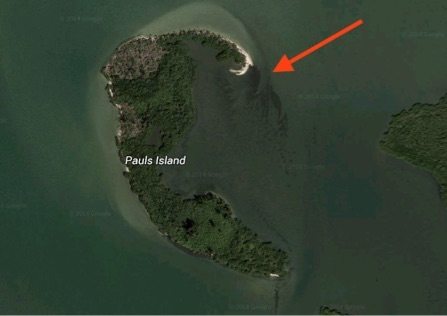
This is an image from an island that caught my eye when scouting out new areas to fish prior to entering an inshore tournament series in Sebastian, FL.
The thick grass at the tip of the island with streaks made from current seemed like an ideal place for redfish and trout to feed…
And we ended up bringing in the biggest fish (7.66lb trout) of our first 40+ boat tournament from this very spot…
Plus, we placed many other trout along with some redfish in the following tournaments too as we learned how the feeding zones shifted around this big area based on the changing tide cycles and weather patterns.
Protected Deep Water Trough for Winter Hideouts
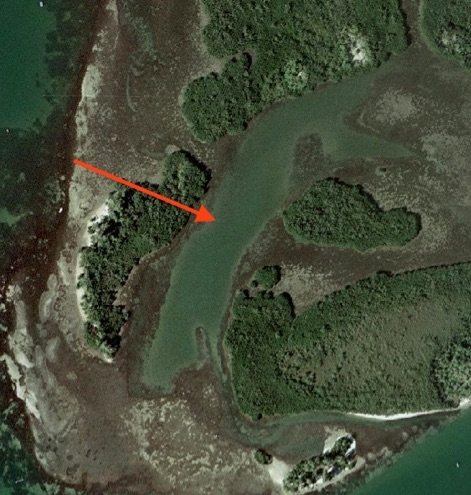
During winter, the drastic cold snaps (yes, even in FL) from fronts can be hazardous for snook, trout, and redfish.
So they often seek shelter from the cold in deeper pools that are protected from wind/waves (the calmer and deeper pools hold on to their warmer temperature much longer than shallow or wind-prone area).
As you’ll see in the picture above, this particular spot is a textbook winter time fishery because it is a deep trough (5ft marked by the arrow) surrounded by islands and/or a shallow grass flat (0 ft. to 1.5 ft. depending on tide)… and the area to the right of the trough is a dark muddy bottom with patches of grass.
Another important winter tip… the coldest snaps in FL most often contain a strong/cold wind coming from the north, so the fact that the north (top) section in this location is protected by a mangrove line is a huge bonus.
Knowing that redfish, snook, and trout seek protected and deeper water after cold snaps makes this type of spot an ideal place to catch fish on the ugliest of days
In fact, my best day back there was right after a nasty cold front on a cold and dreary day with 15+ mph winds from the north.
It was one of the days that I would have never even considered going out in years before when I never learned how to adjust my game plan for the winter.
I would have simply stayed in thinking that the fish were not feeding.
This is just another example of why it’s important to focus on the Feeding Zones based on the conditions… this type of spot would not be very good in the summer months, but that totally changes once the cold snaps start showing up.
Hidden Saltwater Lakes
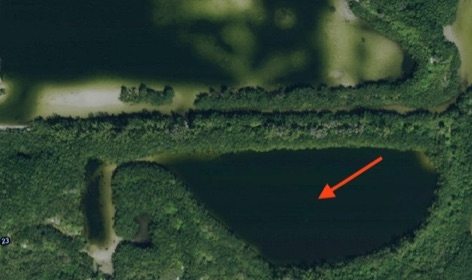
One of my favorite things to with these online satellite maps is to find spots that require some creative exploration to get to.
I’m referring to the types of spots that require a kayak or paddleboard to access… and having to carry across land or follow narrow mangrove tunnels is an added bonus to the thrill of finding fish that are completely wild and have likely never seen a lure.
The pool shown above is an image of a spot that I was particularly proud of finding.
It was shortly after my move to Tampa, and I wanted to take my paddleboard out for some exercise and to scout out some new fishing grounds.
So I went online to check out the areas surrounding a park that I planned to launch from and noticed a lake that was tucked away back in the mangroves. It appeared to be deep given the color of the water, but it didn’t have any large openings… just one very small channel to the left that is too overgrown even for a kayak to get through.
So I noted the part of that thin shot of land along the northern part of it and simply found a small opening in the mangroves and hiked back until I saw the lake.
Best of all, it’s full of snook along with some redfish… and I’ve never seen anyone else back there.
Inshore Fishing Breakthrough #2
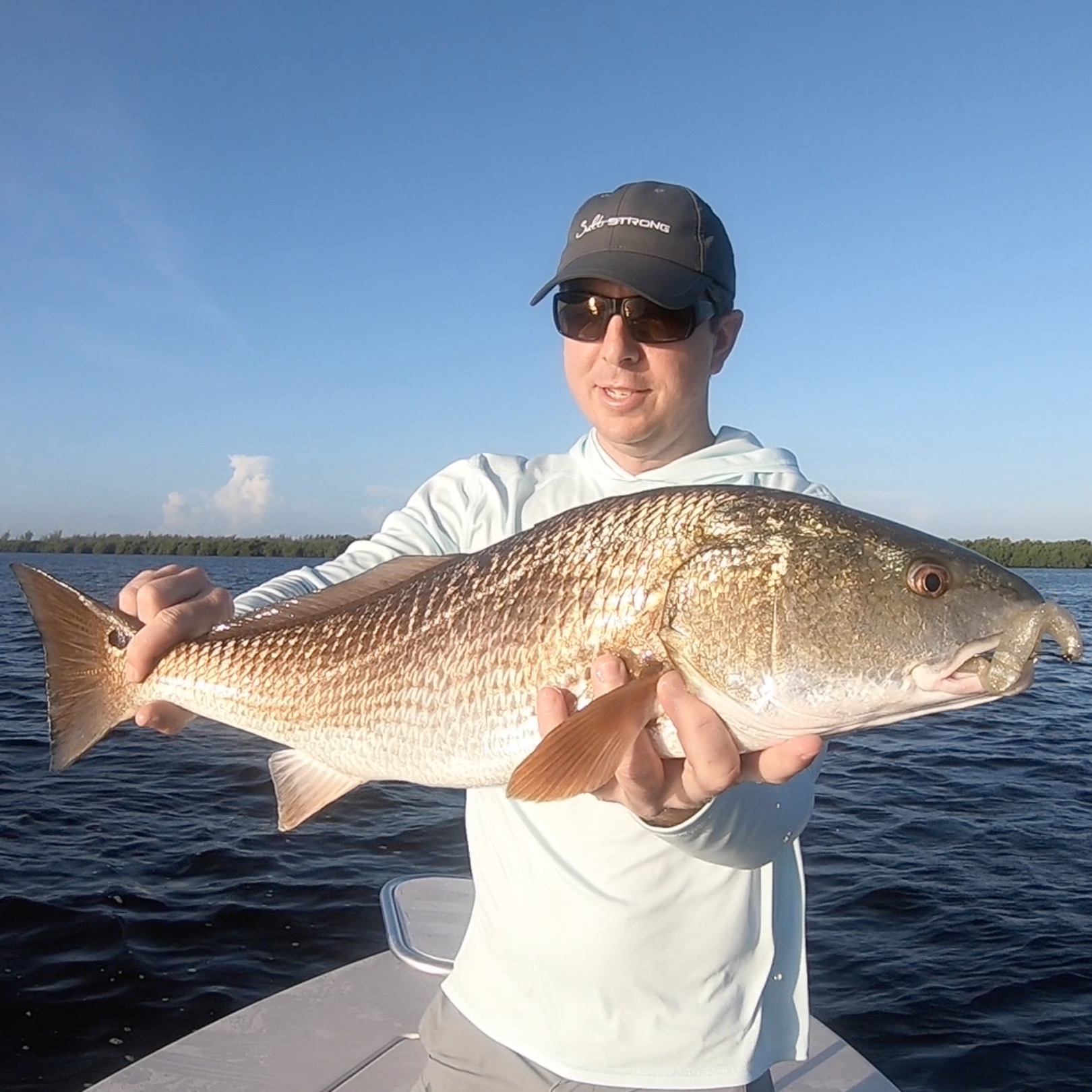
Simplify Your Tackle
Now that I was finally finding good spots and having some better results with understanding how to effectively use free aerial maps to scout out fishing spots, I was pretty darn pumped.
There is just nothing like being able to find new honey holes every trip.
Just imagine that feeling you had the first time you found your favorite fishing hole… and then imagine finding another spot just like it consistently.
But there were still some issues with my fishing game…
The problem was that even though I was finding good spots much quicker and easier than ever before, I was still feeling held back by the time and energy required to get good live bait.
On some days, I’d have to spend over an hour loading up the live well (you know the feeling I’m guessing)…
And I am a guy that likes my sleep, so that 5:00 am alarm clock going off was like someone punching me in the face…
But I had to do it just to make sure I had enough time to catch bait and make it to my #1 spot before someone else got to if first.
However, there were still some days where I just couldn’t find live bait, and by time I was fishing, the sun was already shining bright… and I had completely missed the best bite.
Even worse, all that cast net throwing (I mostly use a 12 footer) was tough on my back. And it always brought loads of grass, dirt, and small fish in every nook and cranny of the boat which required added scrub time when cleaning the boat after the trip.
So I knew that something had to change.
I was wasting way too much time with live bait since I was just your average weekend warrior who didn’t have a daily pulse on the best bait spots…
I was waking up WAY too early for my taste, and my back hurt from that darn cast net and bending over to scrub the boat once back home.
So what did I do?
I decided it was time to use artificial lures exclusively… so I started testing out any and all artificial lures that I either saw on fishing shows or heard from friends worked well.
Sadly, I ended up realizing that most of the shows and magazine article writers out there only pitch the type of bait that they are sponsored by.
And the vast array of ideas I got from friends and peer anglers put a huge dent in my bank account.
Worst of all, I ended up with a ton of baits that I didn’t have much of a clue how to select or work properly, so my fish catching plummeted…
Even to this say, I have a spare bedroom that’s full of old lures, line, hooks, and other flashy baits that I was suckered into buying years ago to remind me of my past mistakes.
However, I finally had a breakthrough with artificial lures, and it happened by total accident.
My luck actually started turning around when I moved to Melbourne FL after college where I didn’t know any of the water nor had access to a boat.
So I bought a kayak and now had the HUGE Indian River to explore.
Given how expansive the inshore fishery is over there, I decided that I would put the full focus on paddling as much as I could in hopes of at least seeing fish to then target later with my huge assortment of lures.
Being a fishing addict, I had to at least bring 1 rod with me in case I had success finding some good fish.
So I would pack up my favorite rod and the lure that I had the most experience using which was a 5” Zoom Super Fluke rigged on a worm hook.
I spent many years targeting bass with it, and I quickly found that inshore saltwater fish would eat it too.
Over time, I started catching more and more quality redfish, snook, and trout as I began getting better and better at identifying the spots that have the highest odds of holding feeding fish.
Most shockingly, I began realizing that I did my best when I simplified my approach in regards to color selection.
If you only take one thing away from this manifesto, let it be this…
SIMPLIFY Your Tackle = You Catch More Fish
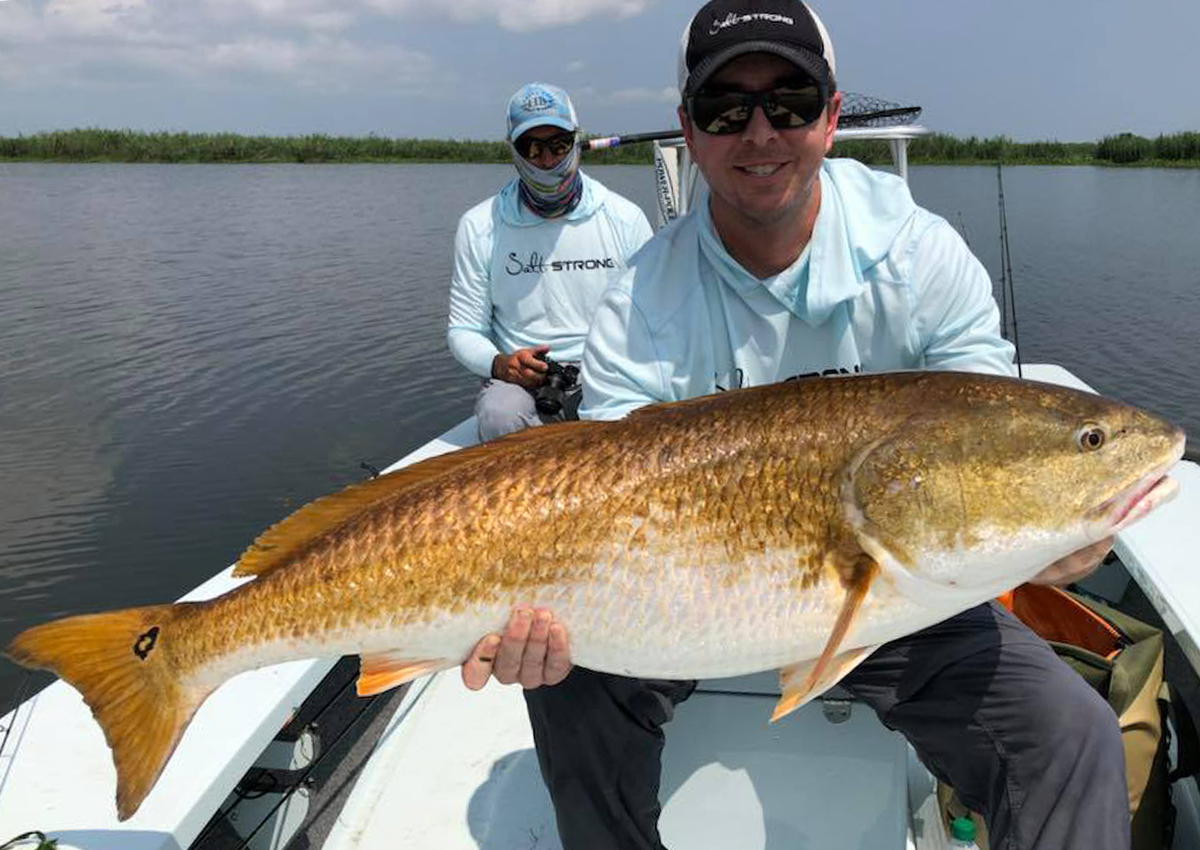
Here is what I did to really get more consistent results (even later in tournaments where I was winning money)…
I’d simply take a light color and a dark color out on the boat with just two sizes (3-inch and 5-inch)… just two colors and two sizes… nothing else.
And the slam catching got more and more consistent.
After the first year of focusing on soft plastic jerk baits, I realized that the lighter color generally performed best during the summer, and the darker color (with a smaller body) most often did best during the winter… and spring and fall were a mix between the two.
I ended up choosing Zoom jerkbaits as my go-to brand after trying out tons of options, and these (shown below) were the styles that worked best for me during my first couple years of intense experimentation with artificial baits.
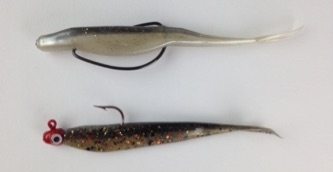
The picture above shows my favorite two lures during the first couple years of intense experimentation.
NOTE: I’ve since moved on to better options… see below for specifics.
Now that I was only using artificial lures, I thoroughly enjoyed the newfound freedom of no longer having to waste any time with live bait because I was now able to spend more time actually fishing and less time prepping/cleaning.
Most importantly, I was able to explore a whole lot more territory given that I could now fish non-stop while on the water.
I started seeing a LOT more fish every trip, and soon began to notice that the biggest trout were most often hanging out in the really shallow grass flats among the mullet schools… and that they were extremely finicky.
How I Started Catching MONSTER Speckled Trout
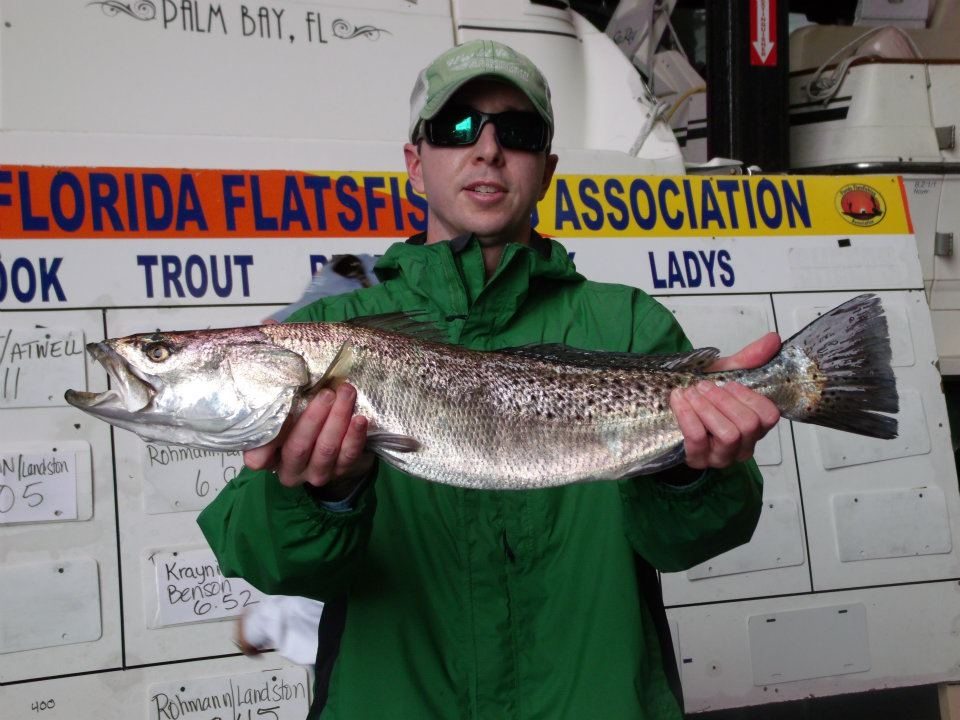
It seemed like every big trout I saw was already swimming away from me by the time I saw it.
So I know it was time to figure out how to cast further so I could get to those big trout before they spooked…
This is actually what finally prompted me to switch from my beloved monofilament line to the newly introduced braid line.
And the switch immediately gave me an extra 15+ ft. of casting distance given its smaller diameter and its lack of loop memory compared to the mono that I previously loved.
This doesn’t seem like much at first glance, but it equates to an extra football field length of water coverage every 30 casts… that’s a HUGE advantage!
Not only was I casting further, but I also had a much better feel of the lure compared to mono given that braided line has almost zero stretch…
I could now even feel the really small pinfish that had the guts to attack a lure bigger than them.
At this same time, I also discovered the swim-bait style hooks that have a small weight attached to the shank of the hook along with some good scented soft plastic jerk baits, and my ability to catch the really big trout (along with redfish and snook) skyrocketed.

This new hook style allows for your jerk bait to swim much better in the water because the weight on the shank makes the bait stay upright (weight side down), while the previous style with the normal worm hook often gave the bait an unnatural spin when it wasn’t perfectly rigged.
Also, the small weight allows for the jerk baits to be very effective in depths from 1 ft. to 4 ft., while the non-weight style wasn’t able to cover the 3 ft. to 4 ft. depth range very effectively.
But the actual improvement in my catching wasn’t just that I was using lures and keeping it simple…
What actually caused the increased fish catching was that by keeping everything simple, I was then able to put my full focus on finding the best feeding zones in the areas that I was fishing.
I no longer wasted any time or energy on catching or maintaining live bait. And I even set aside my creeping thoughts that the lure I had was not what the fish were looking for.
And what I learned is that finding the feeding zones is by far the most important thing to do…
Once that’s done, everything else is easier… you don’t have to have the perfect lure, the longest cast, the best equipment, etc.
And as I got more comfortable in finding new spots while taking detailed notes of my trips, I eventually began noticing trends the kept repeating based on the changing weather patterns and tides.
So my focus went away from fishing the half dozen “specific spots” that I previously relied upon for catching fish (the ones I kept going to over and over again).
And it transitioned to only focusing on identifying the best “type of spot” to fish based on the conditions.
Once I finally got that dialed in, my fish catching skyrocketed to the point where I was able to be profitable entering fishing tournaments on a consistent basis even when going up against full-time fishing guides while I was a full-time financial analyst who didn’t have the luxury of being out on the water every day.
Before this mind shift, I had only caught a few trout over 24 inches. And I rarely caught over slot snook and redfish.
After these breakthroughs, I was catching the 24+ inch trout on a consistent basis even when exploring new areas of the Indian River that I had never fished before.
Best of all, my slam catches (at least one snook, redfish, and trout in a single outing) dramatically increased in both size and prevalence when fishing both the Indian River as well as when going on family vacations along the Gulf coast to Marco Island, Boca Grande/LGI, and Tampa Bay.
And I can’t describe how empowering it was to be able to confidently take out friends and work colleagues for a short 2 to 4-hour trip knowing that we were going to have some fish catching action without having to bother with live bait nor lug around a huge tackle box.
This is when the satisfaction of teaching others the joy of catching fish started becoming a strong passion of mine, and it’s what eventually led to the formation of Salt Strong.
And one of the coolest things that I’ve learned after now 4 years of being a full-time fishing coach has been how similar our inshore saltwater fisheries actual are to one another…
There of course are different water clarities, types of structure, and even different species of prey in the water.
So when the first few members from Texas joined our fishing club, I was very worried that they were going to like what they saw because all experience at that point was totally focused on Florida waters.
But the feedback I received from those early TX members was extremely positive. They reported success using the exact same fish finding strategies from the lessons. And the trends featured in the weekly dissection reports were working too.
The reason for this is that the core tendencies of each species like redfish, seatrout, snook, flounder, etc. are consistent across all areas where they live.
So the great news is that once you understand how they react to the changing conditions (tide, weather, season, etc.), you’ll be able to successfully target them in any region where they live.
Gear Tips (Lures, Line, Rod, Reel, & Line)
Here’s a quick list of gear that I’ve found best results with for fishing the flats and/or backcountry with soft-plastics (in all parts of Florida):
- Lures – 3 to 5-inch soft plastic jerk baits (both split and paddle tail styles)
- Just one light color (light green is my favorite) and one dark color (root beer with chartreuse tail something similar)
- Hooks – [1 ft. to 3 ft. depth] – 3/0 size with 1/16th weight on shank
- Jig Heads – [3ft+ depth] – 1/8 oz. or more depending on depth
- Line (main) – 10 lb. braid
- Line (leader) – 20 lb. monofilament for reds/trout (30 lb. for snook)
- Rod – 7’6” medium to medium-heavy power spinning rod with fast action tip
- Reel – Go as small as possible (I use 3000 size or smaller spinning reels… no need to go bigger unless you’re fishing inlets with really strong currents… for example, I’ve caught multiple 40+ inch redfish and even an 80lb tarpon on the flats with a 3000 size reel with 10 line braid)
Rod vs. Reel Tip – My theory is that the rod is much more important than the reel given that your rod is your core tool for casting, retrieving, feeling bites, and hook setting…
And all a reel essentially does is just retrieve line and provide drag (once the rod first does its work).
For example, I can easily catch the same amount of inshore fish in a given day with a cheap reel on a nice rod, but I wouldn’t have a chance to compete if using a nice reel on a lousy rod.
Note: For the exact brands, models, and sizes to get, I keep a continually updated list of what the best value options are based on actual performance in the Salt Strong Insider Club.
We are 100% sponsored from the Members, so we give totally transparent reviews on rods, reels, lines, lures, etc. without any outside influence from the equipment manufacturers so that you can save a ton of money getting the gear you need without any wasteful spending.
I recommend getting access to it all via the Smart Fishing Spots platform that I mentioned earlier:
Inshore Fishing Breakthrough #3
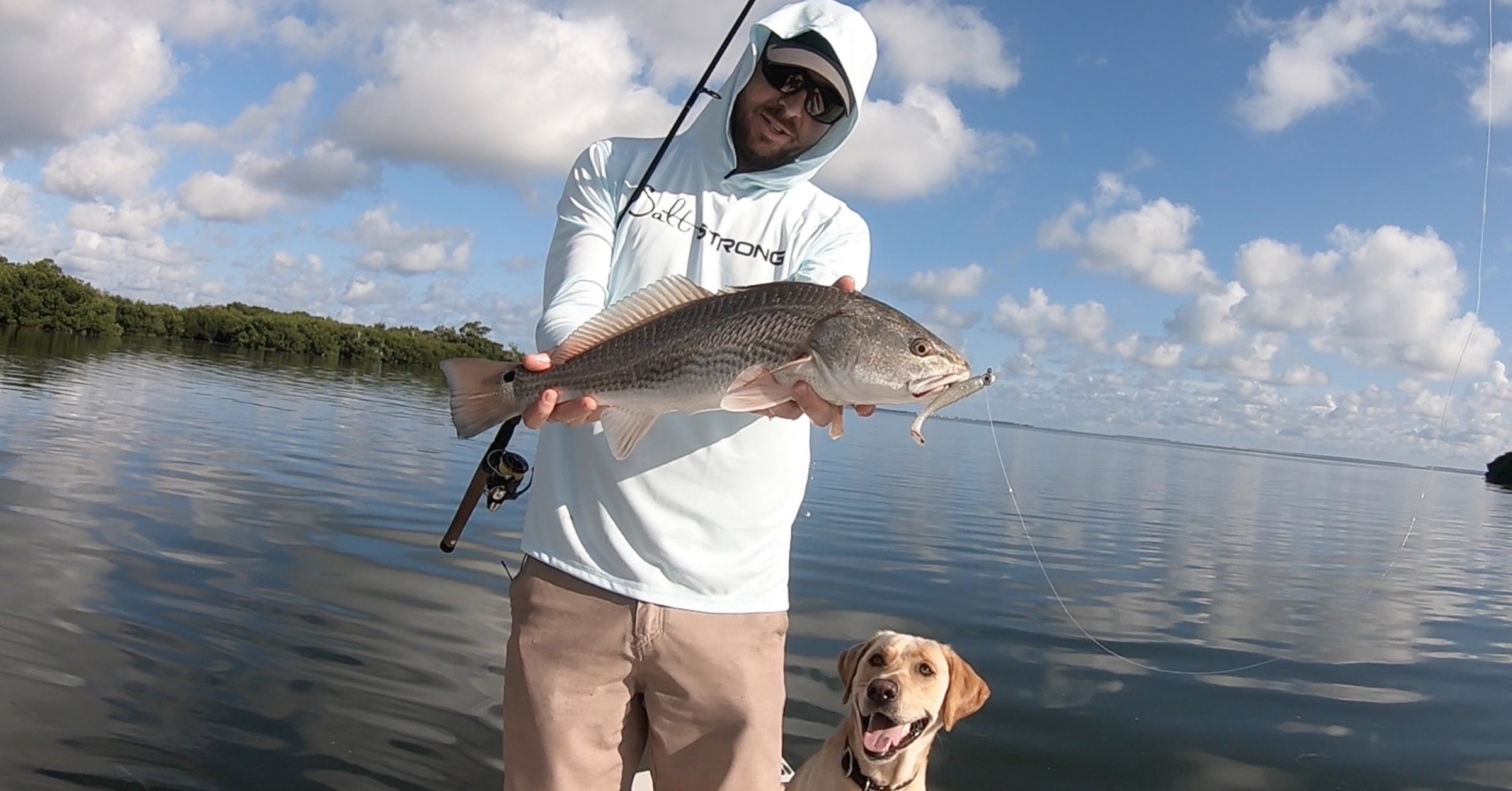
Grow Your Fishing Network
The final breakthrough that provided the biggest impact is the same one that actually took me the absolute longest to comprehend…
It was the power of having a good fishing network.
Seems like many of us fishermen are a bit hard-headed when it comes to seeking advice or help from others.
For example, I used to continually tell myself that fish-catching trouble will be fixed once I can finally find some more time to spend out on the water to learn the area better after a slow day on the water.
Have you used this theory to justify a bad day on the water like I did?
My guess is that all of us fishermen have used it many times.
I sure did.
And it felt totally normal when I was doing it too… it simply uses the popular “practice makes perfect” theory which is very often true.
But the problem with that thought being applied to fishing (or anything else with a lot of technicalities) is that if you are practicing bad tactics and strategies, you’ll only get better at locking in those bad habits.
It’s like trying to get better at golf simply by going to the driving range and hitting balls over and over again.
The odds of coming out of it with a technically sound form with a consistently good golf game will be extremely low without the help of a golf pro/coach to help foster good habits.
I spent years putting a ton of energy into figuring out how to catch inshore slams, and my results were sometimes good, but oftentimes poor.
And those bad days were especially embarrassing when they happened on days where I was taking out a friend or work colleague who knew that I fished all of the time, but then saw that I was totally struggling to get results.
And the solution came at a time when I needed it most but expected it the least.
It was when my buddy Nic and I joined an inshore fishing tournament series that included 8 tournaments plus a 9th one for the top overall anglers to compete for the biggest prizes of the year.
I had just bought my dream flats boat, so the pressure was on to not look like a total rookie in front of the serious anglers who participated in the series (40 to 50 boats including 4 to 5 full-time guides)… especially now that I had a nice boat.
We were friends with one of the other teams at the beginning, and then became buddies with a couple of the other teams too early in the season to the point where we’d be sharing our tactics with each other including valuable details like the areas that we were seeing fish and what baits we were using.
We were all just fishing as a hobby and had full-time jobs that pulled us away from fishing all week long, so we all bonded since we all wanted to be the ones to beat the full-time guides.
Our friendships continued throughout the season and grew to the point where we would even share our pre-tournament scouting reports with one another because there was always at least one of us who couldn’t make time to get out on the water before the tournament to see where the most big fish were holding.
And as the information flowed more freely and frequently, we all continued to get on the leaderboard in the money more and more frequently.
It got to the point where more than just one of us would be in the money on every tournament day.
We were frequently beating full-time guides in these tournaments even though all of us had full-time jobs away from the water.
This network effect of shared information is extremely important, so it should always be a big factor in the game plan of serious anglers who want to continually improve.
The single most important aspect that I found to be the most helpful in the tournament network was the sharing of real-time feeding pattern TRENDS.
Because once we knew that more than just of us were finding the biggest trout on the wind-protected shorelines which had big schools of mullet the day before the tournament…
All we had to do was find wind-protected shorelines that had lots of big mullet on the tournament days, and then just fish them as diligently as we could.
This network effect worked shockingly well to the point where Nic in and place in the top 3 overall for the trout division in our very first tournament series with consistent trout in the 25” to 30” range even though we used just 2 artificial lures the entire time.
The craziest part was that we were previously catching 25+ inch trout about 1 in 4 trips before those tournaments began… the network effect quickly catapulted our results!
So if you’re not already part of a local fishing club or have a good network of fishermen who you can rely on for helpful information, I suggest that you seek it out.
And if you’re specifically interested in catching inshore saltwater fish including:
- Redfish
- Seatrout
- Snook
- Flounder
- Tarpon
- Black drum
- Mangrove snapper
- Tripletail
- Cobia
Then I’m pleased to invite you to join our network of likeminded inshore anglers who are eager to help you succeed and share tips, tactics, and strategies back and forth.
It’s called The Salt Strong INSIDER Club.
It is undoubtedly the largest network of inshore anglers in America with over 8,000 active members at the time of this update to the Manifesto (with 500+ new members joining every month).
We added a private community where members share their own detailed fishing reports, tips, shortcuts, and questions – and it’s now getting 3000+ new posts per week!
It’s like a Facebook Group on steroids… many say it’s “Like having a fishing guide in your back pocket.”
Plus, members share extremely helpful tips with one another (many even show their exact spots).
But unlike a Facebook Group, the reports can all be filtered by region, species, season, tide, water clarity, etc. so that you can always have easy access to what you’re looking for.
And it’s 100% POSITIVE (meaning we don’t allow any negative talk, cursing, bad-mouthing, or belittling in the community).
Best of all, there’s even a Master Map in which all of our personal Insider Reports and Spot Dissections get featured along with the many thousands of posts from fellow members.
Here’s a screenshot of what it looks like at the time of updating this manifesto so that you can see the span of the spot reports:
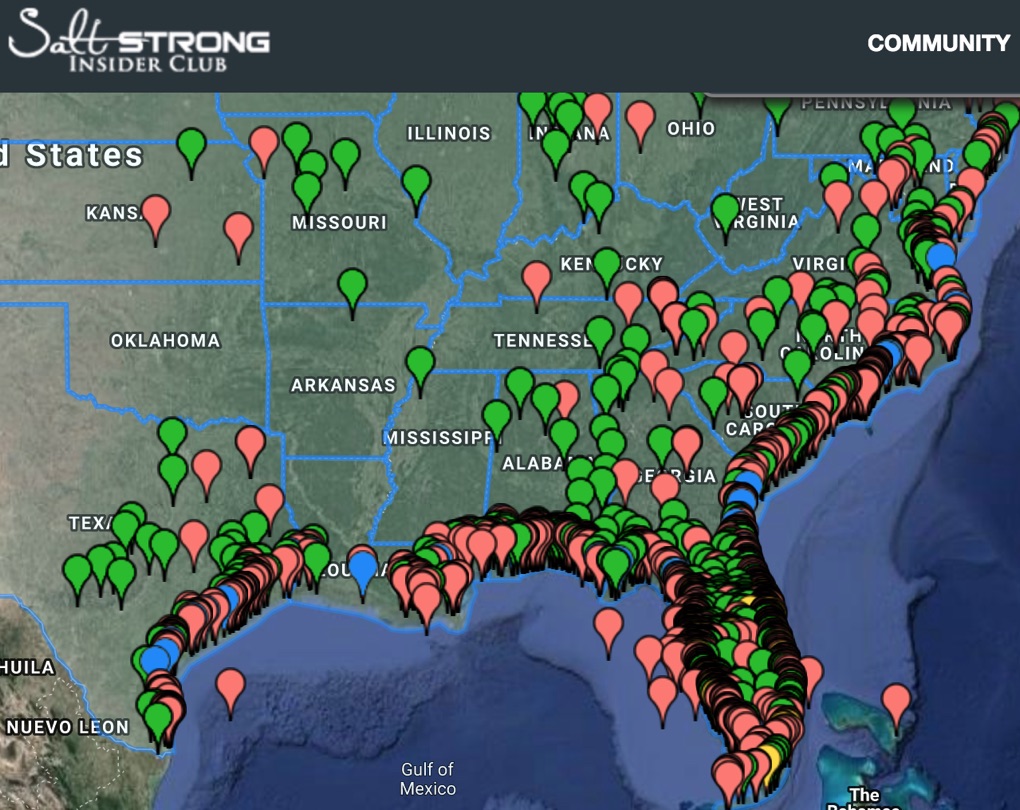
As you can see from the map, the range of fishermen span from the southern tip of TX all the way up to Virginia and beyond.
The skill levels range from full time inshore guides to weekend warriors to even some newbies (but not newbies for very long at all after getting in).
There is absolutely no better network and environment for fishermen looking to catch more and/or bigger fish than this.
No matter how advanced your skill level is, it’s pretty much impossible to not learn at least 1 new trick for catching a fish of a lifetime from a network of 6,000+ anglers who are sharing helpful information.
Our entire mission with the club is giving you the gift of time so you can create more amazing memories out on the water.
We even offer a bold 365-day 100% satisfaction guarantee because we know how much of an impact it will make to you too.
You’ll absolutely have plenty of time to see noticeable results, and we are absolutely confident that you’ll be totally thrilled with your investment at the end of the first year.
Plus, when you join today, we throw in the entire Smart Fishing Spots platform that I mentioned earlier for FREE!
And you’ll get instant access to our stable of pro fishing coaches, exclusive what’s working now fishing tips, mini-fishing courses, and even discounts on popular fishing tackle.
Most members save more than the cost of membership in just the fishing tackle alone!
Conclusion
After years of frustration trying to transition from being a bass angler to becoming an inshore saltwater fisherman, I totally understand how daunting the journey of becoming a consistent inshore angler can be.
But the rewards are so great that I hope you don’t let any of the hurdles get in your way.
The excitement level on every strike is incredibly thrilling because you never know what species it can be. One cast can have a 10-inch trout… while the next cast hooks a 6-foot tarpon… all within easy access to a shallow flat in many cases… there’s just nothing else like it.
There will undoubtedly be many hurdles to overcome along the way, but just know that our website, our community, and our fishing coaches will be running 24/7 to help support you.
Beware of the countless “experts” whose advice always seems to circle around pitching equipment from their sponsors… that alone would have saved me a lot of money.
But most importantly, make sure to always keep your focus on putting yourself in position to maximize your time in the feeding zones and minimize your time in the dead zones.
This takes a combination of using online maps, learning how to read the water when you get to a targeted spot, and knowing the trending feeding zone patterns based on the season/tides/weather.
Never forget that 90% of the feeding fish are in 10% of any area.
The ability for you to catch more fish in less time will enable you to get out more often and enjoy the outdoors more days than you otherwise could…
Fish catching doesn’t have to be reserved only when an entire day is open.
In fact, I now rarely fish for more than 3 hours. Yet, I’m catching more and better fish per trip than before stumbling upon these breakthroughs over many years of trial and error.
I made my transformation over 10+ years having to learn everything the hard way.
This article alone would have saved me many trips of getting skunked with a feeling of no control over my ability to get better.
Now earlier I told you about my struggle with tennis, and how an online course with an over the top guarantee to jump up an entire level in USTA or he pays me 100% of the money back, changed my entire tennis game.
Well, I truly believe that I was put on this earth to teach people how to catch more fish.
And I want to “pay it forward” by giving you the same kind of experience that this tennis guy did to me (but of course I am going to teach you how to catch more redfish, snook, flounder, and monster trout… not tennis).
And based on the feedback that we’ve had from thousands of fishermen who are part of the Salt Strong Insider Club ranging from full time fishing guides, weekend warriors, and even some beginners, we have thousands of case studies proving it saves anglers TIME and MONEY.
I am 100% confident that you’ll be absolutely thrilled with your investment in the Salt Strong Insider Club that we provide a 100% satisfaction guarantee for an entire 365-days when you join as an annual member.
This way, you have plenty of time to see the transformation in your fish catching results to be 100% confident that the money invested was just a tiny fraction of the value that you received.
This Insider Club is exactly what I wish I had access to when having to learn it all the hard way.
This includes the structured lessons that you need to have the proper mechanics on your fishing trips.
And the weekly real-time Insider Reports and Spot Dissection deep-dive videos will help you make sure that you’re informed about the latest feeding trends to factor into your trips.
Plus, you’ll get full access to the massive Network of like-minded fishermen for an entire year.
Had I joined this back when I began inshore fishing, I would be been saved from 10+ years of lackluster results, and I would have saved well over $3,000 by simply not buying equipment that wasn’t needed.
Tight Lines!
Luke Simonds
Chief Fishing Addict
Salt Strong
Want To Learn More About The Insider Club?
The exclusive Salt Strong Insider Club is that absolute best tool that can take you from where you are now to consistent FISH CATCHING FREEDOM!
And by joining from this offer link below, you’ll get 12-months of access to our Fishing Club so that you’ll get results as fast as possible.
You will not find anything else like this out there.
That’s a huge reason why it’s growing by 500+ members a month.
And it’s what enables us to provide a full 365-day 100% satisfaction guarantee on your experience as a Member… if only everyone would stand behind their products like this!
Related categories:
STOP WASTING TIME ON THE WATER!
Do what the “SMART ANGLERS” are doing and join the Insider Club.
Here’s what you’ll receive today when you join:
- Weekly fishing reports and TRENDS revealing exactly where you should fish every trip
- Weekly “spot dissection” videos that walk you through all the best spots in your area
- Exclusive fishing tips from the PROS you can’t find anywhere else
- Everything you need to start catching fish more consistently (regardless if you fish out of a boat, kayak, or land).
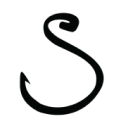
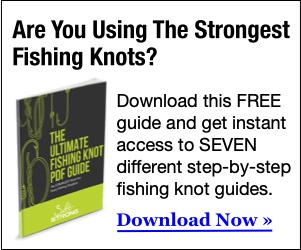

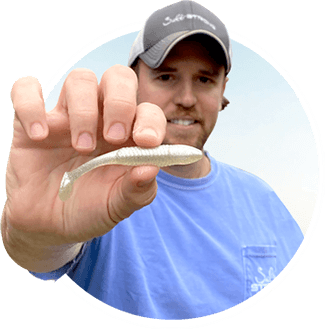
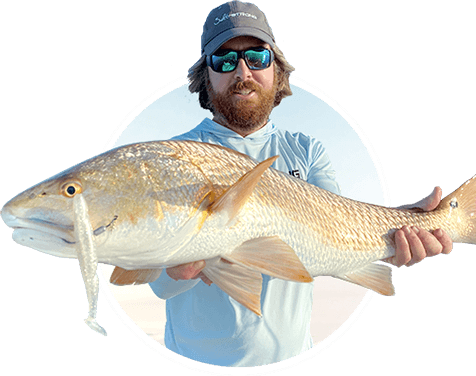
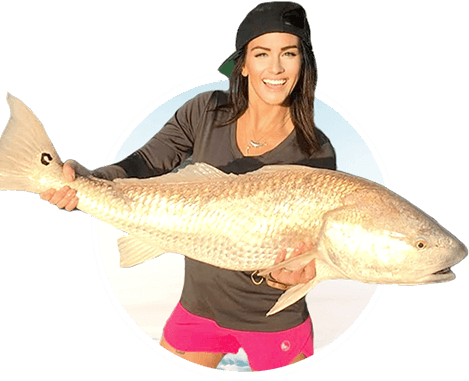
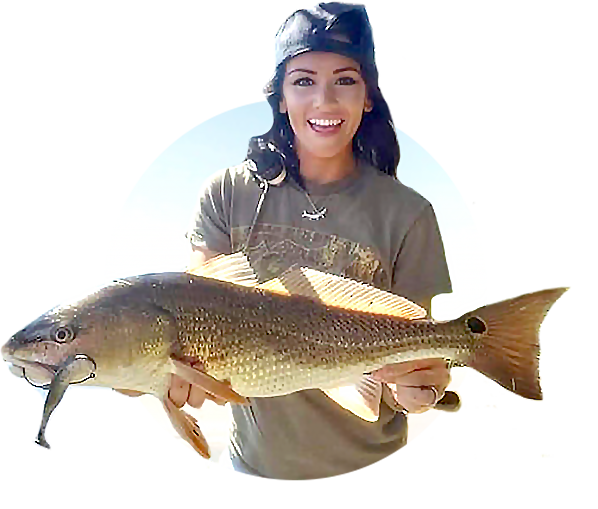
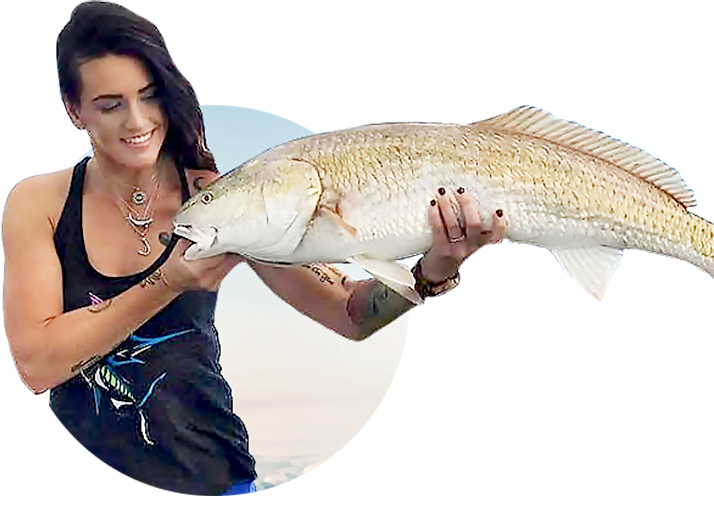
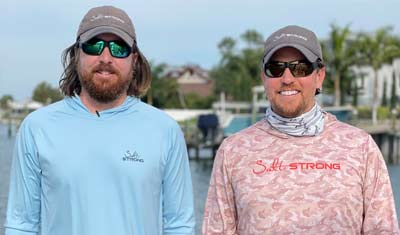
Awesome! Thank you!
To; Salt Strong ;
Iam on the central East coast of Fl. From Patrick AFB ,Melbourne to Port.St. Lucy.
Very rarely we get a fishing report in this area. Mostly Tampa, Jacksonville.
Sebastian Inlet ,lndian River,Treasure Coast area not mention much or if any?
The Gulf and the Keys have great Fishing. But limited in the Inland Waterways on the Treasure Coast due to dredging , Mango roots being filled in ,feather banks grass flats being destroyed and drainage from all the inland waterways! I remember back in the early 60s when the Indian river water was crystal clear and they had wooden bridges and shrimp would run in schools! Giant goliath grouper‘s snook and redfish were abundant back in the coves now the water is only about 1” to 6” deep or a developments were built Covering up all the natural habitat for fish. were you it used to be good fishing. Any help you can give us would be appreciated.
The same strategies explained in the weekly Game Plan lessons (https://www.saltstrong.com/article_categories/smart-fishing-game-plans/) will apply to your area as well. For example, I was over there about a month ago and fished for about an hour just north of the Eau Gallie Causeway (near dragon point). Found some snook along the mangroves in a zone with a lot of mullet activity… had one strike, but I missed the hookset. Then we fished the rocks on the outside edge of Anchorage Yacht Basin to get some action from a bunch of bluefish and ladys before we had to head in… not enough action to make a report on, but it at least was a good example of the same types of spots holding fish in the Indian River as other areas around the state.
I live in NC. I have all the lures and have been fishing a long time though not in NC but in NJ where I grew up. I am not having much success catching fish here in Brunswick County. Is there soneone I can connect with to help me out. Thanks guys.
Ralph N.
Had any luck since posting this? The yellow butterflies are here. That’s a sure sign the fall fishing has arrived. The Smart Spots show a few places between Spt and OI. Tight lines!
I know this thread is old, but please edit “Forward” to “Foreword”. Keep up the great work, though!
hi luke,
Every time I listen to you talk about the fishing community and yourself, about your trial and errors for 10+yrs, I appreciate the fact that you and the others in the community are giving me as well as others, this valuable information to go out and catch fish. I am totally turned on and excited about getting out on the waters. I’m frustrated because I am sitting here reading about how to find the fish using maps to plan my trip, and not being able to get on the waters till next year. You don’t know how anxious I am. Thank you very much. Like you, I am passionate about fishing and I like to help others. Keep on doing what you do best. Thank you once again. tight lines
Red fishes are very hard species of fish to catch. I’ve tried all possible methods. I hope this post helps.
Luke that is a lot of information thanks for all you do and Joe planning getting out next weekend in the kayak Father’ s day weekend a lot of refreshing thoughts and now I need to apply them thanks a lot oh yeah Iam saving a lot of money not donating all those Bass tournaments no more I want to get better at a new game thanks again SALTSTRONG
Thanks for making time to post this nice comment Robbie.
Best of luck to you out on the water next weekend!
Does anybody else have trouble with the free pdf manifesto link? I hit it and nothing happens.
Yep, happens to me also!
Here’s the page that the link was supposed to take you to: https://secure.saltstrong.com/manifesto-fishing-book
Thanks Luke, Tight Lines my Friend!
I know you guys must have seen these weird lines just S. of Sebastian Inlet in the Pelican Island National Wildlife Refuge visible on Google Maps…What are they?
I believe I recall seeing a lot of clamming poles in that area years ago, so I assume it’s structure on the bottom from the clammers.
Too much writing and not enough fishing lol
Haha. Perhaps you’ll enjoy this post better: https://www.saltstrong.com/fishing-tip/clearwater-fishing-report/